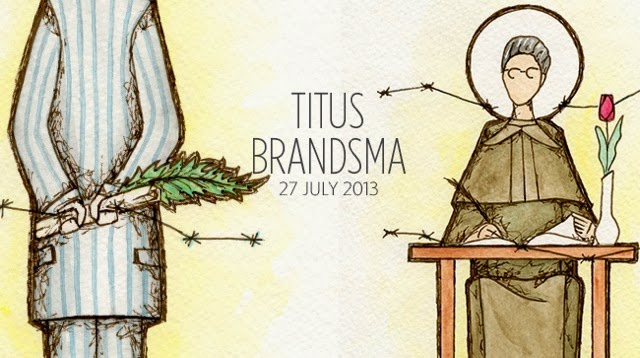http://ncronline.org/blogs/grace-margins/panel-fordham-focuses-spiritual-and-religious
The above article attempts to describe the growing number of "nones", that is, those not affiliated with any religion and the traditionally "religious". Now, that the number of nones is growing, but the number of Catholics is also growing, albeit at a slower pace, but steady and true.
The new information this week that vocations are "up" in the States with real numbers showing the increase in seminarians is also good news. So, what does an introspective reader see in these odd statistics?
In reality, the West is witnessing a clearer demarcation between those who are orthodox believers and those who are "nones". This is not the same as having a culture wherein the Protestant denominations remain strong. In most areas of the States, the traditional Protestant congregations are dying out. The growth in the nones, and the growth in non-denominational, non-affiliated, "Church of Bob" members, reflect the same movement : an the emphasis on individual religious interpretation combined with the formation of faulty consciences.
Why these trends are happening, of course, is why denominations come and go-that is, the wearing away of doctrines, and the weakening of traditional Christian moral teaching. Why these trends are important for Catholics to understand is not only in the revising of how we all evangelize, a topic about which I wrote on this blog months ago, but, perhaps more importantly, how we view ourselves as Catholics in vastly changing religious milieus.
These changes demand that we begin to see ourselves differently, or perhaps to be more correct, more historically accurate in these times.
To state what may be obvious to some is to say loudly and clearly that Catholics must re-discover their counter-cultural roots. We are no longer mainstream either morally or politically, being marginalized daily.
We are being marginalized not only by the seculars, but by other "spiritual" groups.
Today, I spoke with a bright, young priest who expressed, that the intuition among priests in his diocese concerning same-sex marriage legislation in the States, is that this issue will become law through a Supreme Court decision, in the same way that Roe v. Wade became the law of the land. What will ensue is the final splitting of the Protestant denominations and the nones with any semblance of Christian tradition. The divisions will be clearer, sadly, as people who are not aligned with the one, true, holy and apostolic Church, will spin off into compromise.
This type of division occurred after Roe v. Wade, but has remained hidden to a great extent. However, with the ssm ruling, when it comes, will be clearer divisions caused by the faulty formation of conscience.
Now, many Catholics on this side of the pond and in Great Britain still maintain that abortion is not THE issue. It does not to be seen as "the" issue, but one of several issues which has formed the lax consciences of spiritual, not religious people, leading to more tolerance of sin and age-old taboos, such as polygamy and ssm. In other words, the legalizing of abortion has led directly to the legalizing of other serious sins.
This is why I do see abortion as "the" issue. It opened the floodgates to the acceptance of mortal sin. The legalization of such a serious affront to God and nature has deadened many consciences.
That the nones claim to be "spiritual" but not religious indicates a confusion as to the integration of morality, spirituality, and religion, which is true worship of God.
Religion is not merely a set of laws and liturgical rules, but the proper worship of God in a community.
Those who claim to be spiritual do not want any conformity with any denomination. This is sola fide, sola Scriptura, sola gratia, sola Christus and sola gloria taken to the extreme, reminding one of Roger Williams, who claimed that the only person holy enough with whom he could pray was his wife, thus severing his ties with the Congregationalist, the Baptists, and him becoming the arch-separatist of America.
The nones are the descendants of Roger Williams, who claim absolute independence and priority of conscience, no matter how ill formed that conscience may be.
I call him the
Patron Saint of the Spiritual, Not Religious.
His experimentation with non-organized religion failed, and led directly to Unitarianism.
The cry of the spiritual, whether nones or non-denominationals, is the cry of liberty of conscience without considering the formation of conscience according to the Scriptures and Tradition.
We, as adult Catholics, must deal with this type of confusion as to the real value of religion and the formation of conscience. Catholics must regard any discussions dealing with freedom of conscience and the heresy of
indifferentism, (the heresy which claims all religions are the same and of equal value), within the context of morality as suspect and dangerous. The real problem lies within some Catholic circles, which claim, even after excellent teaching to the contrary by both Blessed John Paul II and Pope Emeritus Benedict, that a good conscience can be one in disagreement with Church teaching.
Never.
Here is how we re-define ourselves against this serious flaw in spiritual thinking.
One, remaining faithful to the Tradition and Scripture of the Catholic Church through study and prayer.
Two, repenting of the spirit of dissent which has spread out from the nature of Protestantism into the Church.
Three, developing the virtue of obedience and meekness of heart.
Four, appropriating the Faith as an adult with a well-formed conscience.
I hope to continue these thoughts in another posting in the future. When the great break between all the historical denominations occurs in the West, the only groups remaining will be the nones, the seculars, (some of whom are neo-pagans), and the Catholics. If we have not re-defined ourselves by that time, we shall disappear from some places.






.jpg)


